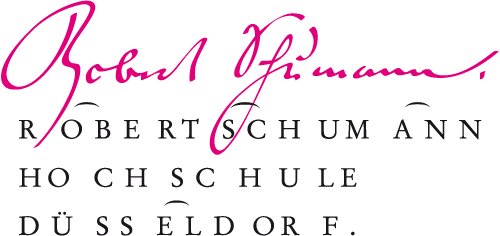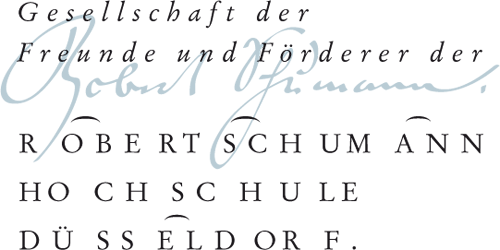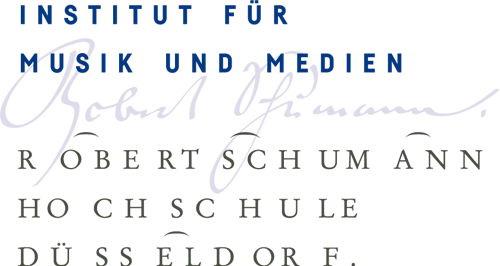DFG-Projekt „Darstellung und Rezeption klassischer Musiker*innen bei YouTube: Aufführungs- und Lebenspraxen im digitalen Zeitalter“ (Arbeitstitel)
„Classical musicians’ presentation and reception on YouTube: performance and life practices in the digital age“ (working title)
Aktuelles:
Durch den Ruf auf die Professur für Musikwissenschaft an der Universität
Koblenz-Landau, Campus Koblenz ist das Projekt umgezogen.
Sie finden uns nun unter:
https://www.uni-koblenz-landau.de/de/koblenz/fb2/instmusik
Kontakt:
Priv.-Doz. Dr. Corinna Herr
Vertretungsprofessorin Musikwissenschaft am
Institut für Musikwissenschaft und Musikpädagogik
der Universität Koblenz-Landau
Postfach 20 16 02
56072 Koblenz
Campus Koblenz
Raum F 418
+49 261 287 2160 (Sekretariat)
cherr(at)uni-koblenz.de
Dem Musikwissenschaftlichen Institut der RSH sei sehr herzlich für die
Gastfreundschaft gedankt!
Eine informelle Kooperation werden wir gern aufrecht erhalten.
Abstract:
Die digitalen Medien sind für den professionellen Musikbereich unabdingliches Produktionsmittel und gleichzeitig unverzichtbares (Selbst-)Präsentations- und Werbemedium. In der hier projektierten Studie werden die komplexe Beziehungsgeflechte von Darstellung und Rezeption klassischer Interpret*innen im digitalen Zeitalter exemplarisch am Videoportal YouTube und am Fallbeispiel professioneller, solistischer Interpret*innen klassischer Musik analysiert. Hierbei werden sowohl von Musiker*innen und anderen privaten Nutzer*innen auf YouTube eingestellte Videos als auch Videos, die von großen Musiklabels (fallbeispielartig: Deutsche Grammophon und Warner Classics) auf deren YouTube-Kanälen präsentiert werden, im Blick auf Präsentation und Rezeption untersucht. Die Analyse ergibt eine Vielfalt von Präsentationsvarianten im digitalen Raum, die auf neue Formen von Aufführungspraxen deuten. Es finden sich Werbetrailer für CD-Produktionen, aber auch Abfilmungen von Probenaufnahmen bzw. Aufnahmeprozessen. In (semi-)narrativen Videos werden die Interpret*innen zu ‚Filmstars’, die zum Klang der eigenen musikalischen Interpretation agieren. Diese Praxis ist weit von der Bühnenaufführung und auch vom üblichen Opernfilm entfernt. Die bei YouTube übliche Kommunikationssituation, die von jedem/r Nutzer*in mit eigenem Kanal Kommentare sowie das Anklicken von „like“- und „dislike“-Symbolen zulässt, spiegelt nicht nur eine relativ ‚ungefilterte’ Rezeption der Angebote, sondern sie enthüllt durch diesen ‚user generated content’ auch Lebenswelten der Rezipient*innen klassischer Musik im digitalen Zeitalter. Es geht also um den musiksoziologischen Zugriff auf Musikpraxis und -rezeption sowie um die anthropologisch relevante Selbst- und Identitätsbildung, die hier im Blick auf die sie umgebenden und in sie eingreifenden Bedingungen der digitalen Kultur untersucht wird. Eine der Hypothesen des Projekts betrifft eine Erweiterung der performativen Ästhetik der entstehenden Videoclips durch im Kommunikationssystem von YouTube erst entstehende Eigenschaften. Dieser monographische Ansatz wird durch einen qualitative Teil ergänzt, in dem Leitfadeninterviews mit künstlerisch Studierenden aus der Generation der ‚digital natives’ durchgeführt und ausgewertet werden. Das Erkenntnispotenzial der musikwissenschaftlichen Untersuchung umfasst grundlegende Einsichten in die soziopolitische Problematik von ‚virtuellen’ Lebens- und Berufswelten im Kontext der sich neu formierenden Disziplinen Digital Sociology und Virtual Anthropology bzw. Ethnography.
For professional musicians digital media are indispensable tools of production but at the same time essential means of self-presentation and promotion. This project looks at the complex relationships concerning classical musicians’ self-presentations in the digital age. The case studies consist of professional classical soloists presenting themselves on YouTube their (divergent) approaches to a visualization as well as the video’s reception. Videos uploaded by musicians and other private users as well as those videos presented through the YouTube channels of big labels (case studies: Deutsche Grammophon and Warner Classics) are being examined in view of their presentation and their reception. The videos show a wide range of forms implying new performance practices for the digital environment. We find trailer for new cd-productions as well as filmed practices and recording sessions. In (semi-)narrative videos interpreters become ‚filmstars’, acting to the sound of their own music. This practice is as different from stage performances as from an usual opera film. YouTube’s communications affordances include comments (if not deactivated) as well as the click on „like“ and „dislike“ buttons. This user generated content allows a view into a relatively unfiltered reception as well as glimpses into the everyday life of classical music listeners and viewers in the digital age. The sociological focus is on praxeology and its reception as well as on the anthropologically relevant formation of the artistic self and identity in the digital culture. One of the project’s hypothesis states that the performative aesthetics of the resulting music videos is enhanced by emerging features in YouTube’s communications systems. The monographic part of the project is closely linked with a second part in form of a qualitative study where guided interviews with music students, who are by virtue of late birth ‘digital natives’, are conducted and evaluated. In consequence of the analyses new insights regarding the ‘concerts of the future’ may reasonably be expected. The potential of this musicological research extends to insights into the sociopolitical area of living and working in virtual environments in the emerging field of Digital Sociology and Digital Anthropology.
Fon: +49.211.49 18 -0 www.rsh-duesseldorf.de


